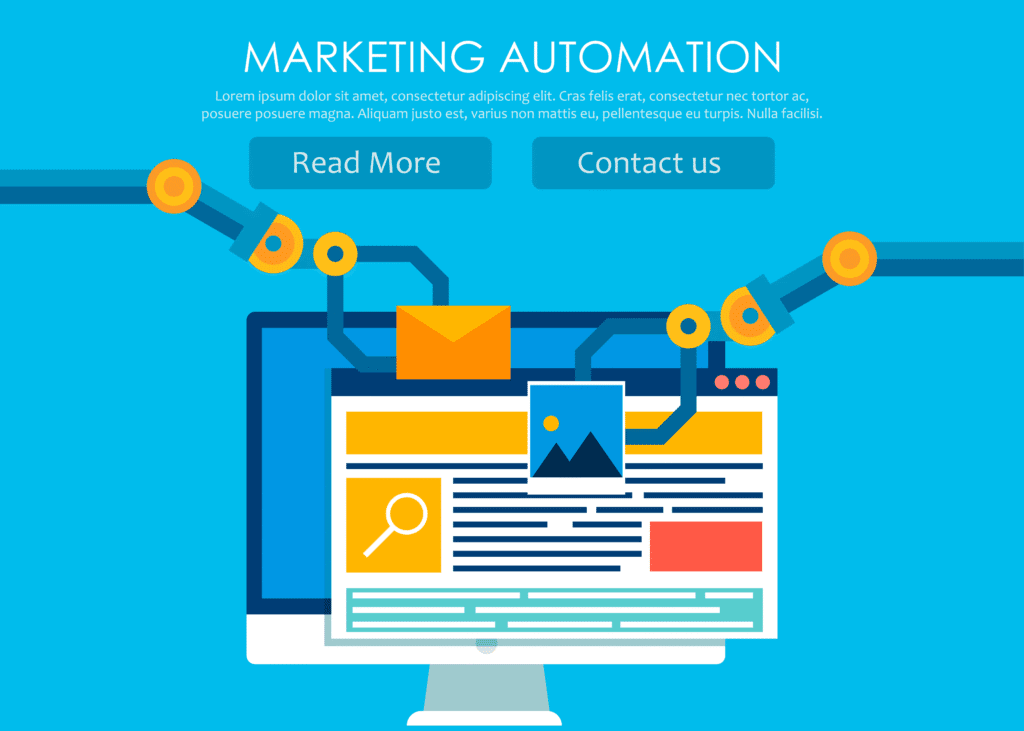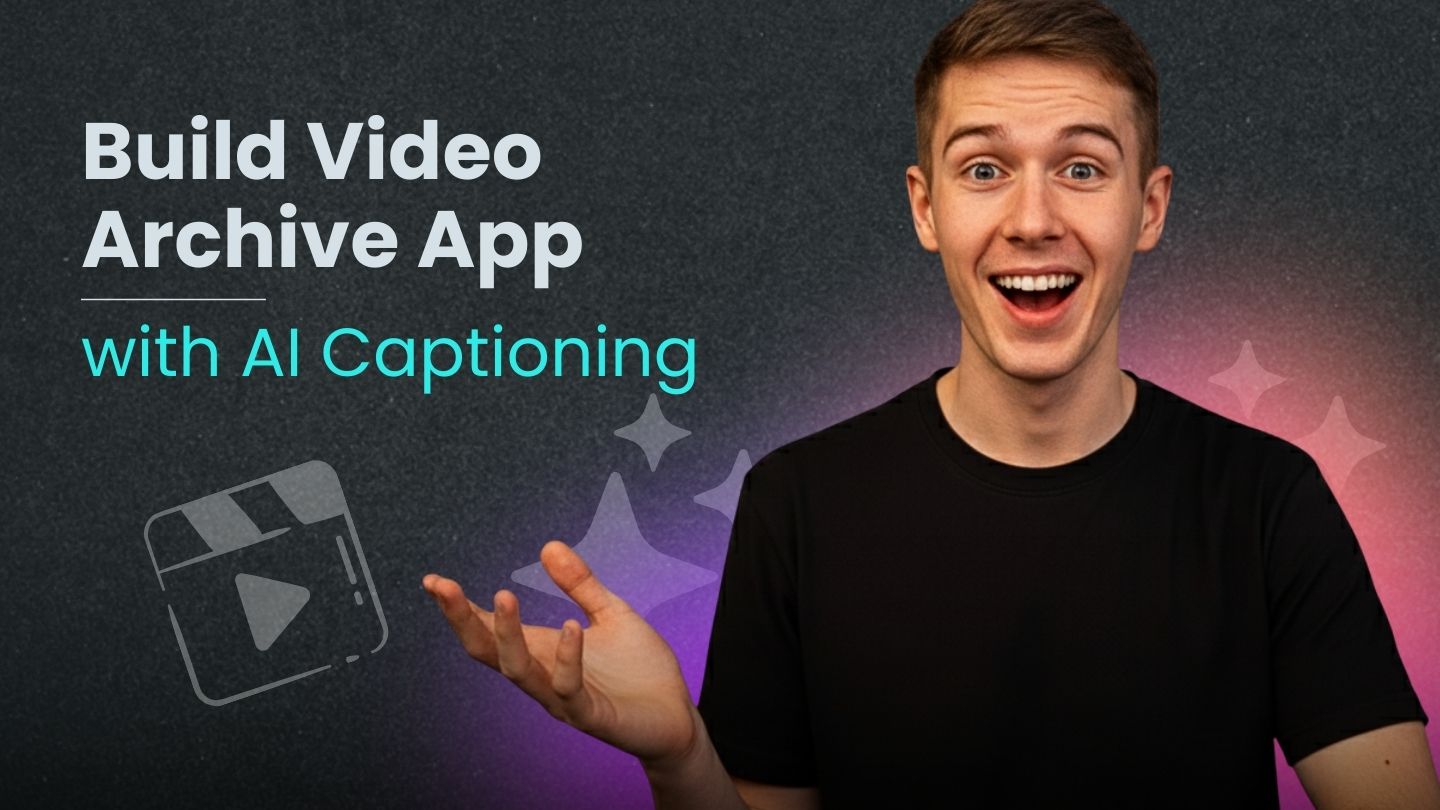
Understanding AI Content Repurposing and its Benefits
What is AI Content Repurposing?
AI content repurposing leverages artificial intelligence to transform existing content into new formats and variations. Instead of starting from scratch, you feed your original material (a blog post, a video script, or even a presentation) into an AI tool. This tool then uses natural language processing (NLP) and machine learning to automatically adapt it, saving you significant time and effort. In our experience, this can boost content production by up to 50%, freeing up time for more strategic tasks.
A common mistake we see is simply rewording the original content. True AI-powered repurposing goes further. For instance, a detailed blog post can be summarized into concise social media posts, transformed into an engaging infographic, or even used as the basis for a short explainer video script. Consider a long-form article about sustainable living. AI tools could easily generate shorter posts for Instagram, create bite-sized tweets highlighting key takeaways, and even craft engaging caption options for each piece of repurposed content. The key is to leverage AI’s ability to understand the core message and repackage it effectively for different audiences and platforms. This multifaceted approach maximizes reach and engagement.
Launch Your App Today
Ready to launch? Skip the tech stress. Describe, Build, Launch in three simple steps.
BuildKey Advantages of Using AI for Content Repurposing
AI-powered content repurposing tools offer significant advantages over manual methods. In our experience, the most impactful benefit is increased efficiency. Manually transforming a blog post into a series of social media snippets, for instance, can be incredibly time-consuming. AI tools automate this process, allowing you to repurpose existing content at scale and significantly reduce your workload. This frees up valuable time for creating fresh content or focusing on other crucial marketing tasks.
Beyond speed, AI enhances content quality. A common mistake we see is relying solely on simple copy-pasting, leading to diluted messaging. Sophisticated AI tools analyze your original content, identify key themes, and intelligently adapt the language and tone for different platforms. For example, a detailed blog post might be condensed into concise tweets while retaining its core message, maintaining a consistent brand voice across all channels, which directly impacts engagement and brand building. Furthermore, AI can help identify and suggest optimal content formats for maximum reach based on data analysis of audience behavior on different platforms, boosting overall performance and ROI.
Common Content Formats for Repurposing
A cornerstone of effective content repurposing lies in understanding the versatility of different formats. In our experience, blog posts are frequently repurposed into shorter social media snippets, engaging video scripts, or concise email newsletters. For instance, a detailed blog post on “SEO Best Practices” could be easily transformed into a series of tweets highlighting key takeaways, a short explainer video focusing on a specific technique, or a concise email promoting an accompanying SEO guide. Remember to tailor the content to each platform’s specific audience and style guidelines.
Beyond blogs, consider the potential of long-form content like ebooks and white papers. These can be dissected into smaller, more digestible pieces for various channels. A common mistake we see is ignoring the inherent strengths of each format. For example, an ebook chapter could become a standalone LinkedIn article or several Instagram carousel posts with compelling visuals. Similarly, podcast episodes can be transcribed into blog posts or repurposed as short audio clips for social media platforms. Strategic repurposing increases your content’s reach, maximizing your investment and building brand authority across various touchpoints.
Top AI Content Repurposing Tools: A Detailed Comparison

Tool A: Features, Pros, Cons, and Pricing
Tool A boasts a robust suite of features designed for efficient content repurposing. Its core strength lies in its AI-powered content transformation engine, capable of converting long-form articles into concise social media posts, engaging video scripts, or even short-form audio clips. In our experience, the automated tagging and categorization features significantly streamline the workflow, saving considerable time compared to manual processes. A common mistake we see is underutilizing its built-in SEO optimization tools; leveraging these features can boost content visibility across various platforms.
Pricing for Tool A follows a tiered subscription model, ranging from a basic plan suitable for individual users to enterprise-level options with advanced analytics and team collaboration features. The mid-tier plan, in our opinion, offers the best value for most businesses, including access to priority support and a larger content processing quota. However, potential downsides include a steeper learning curve than some competitors and occasional limitations in handling highly technical or niche content. For example, while it excels at repurposing marketing materials, we found its performance less consistent with highly specialized scientific papers. Consider your specific needs and content types before committing to a subscription.
Tool B: Features, Pros, Cons, and Pricing
Tool B, “Repurpose.AI,” offers a robust suite of features designed for efficient content repurposing. Its core strength lies in its AI-powered content transformation engine, capable of converting long-form articles into various formats like social media posts, short-form videos, and even email newsletters. In our experience, the automated tagging and categorization significantly speed up the workflow. A common mistake we see is underutilizing its batch processing capabilities; processing multiple articles simultaneously saves considerable time. Pricing starts at $49/month for the basic plan, scaling up to $199/month for enterprise-level features and higher usage limits.
Repurpose.AI excels at automation, but its steep learning curve can be initially challenging. While the AI performs admirably in most transformations, we’ve found the quality of output can vary depending on the initial content’s complexity. For example, highly technical articles might require manual adjustments after AI processing. Moreover, the lack of direct integration with certain popular social media platforms necessitates extra steps. However, its overall efficiency and the time saved in repurposing content often outweigh these minor drawbacks, especially for businesses with large content libraries seeking to maximize their reach and ROI.
Tool C: Features, Pros, Cons, and Pricing
Tool C, “RepurposeAI,” boasts a robust suite of features designed for efficient content transformation. Its strength lies in its AI-powered translation capabilities, allowing for seamless adaptation across multiple languages, a crucial feature for global content strategies. In our experience, this significantly reduces the time and cost associated with multilingual content creation. It also offers advanced formatting options, enabling the conversion of blog posts into engaging social media snippets, easily digestible infographics, or even short-form video scripts. A common mistake we see is underestimating the power of diverse content formats; RepurposeAI helps mitigate this.
Pricing for RepurposeAI is tiered, starting at $29/month for the basic plan, offering limited content transformations and user accounts. The premium plan, at $99/month, unlocks unlimited transformations and team collaboration features, proving cost-effective for agencies or businesses with substantial content repurposing needs. While its advanced features are undeniably powerful, some users have reported a steeper learning curve than competing platforms. However, their comprehensive tutorials and responsive customer support largely offset this. Ultimately, the value proposition depends on individual needs and budget, but for businesses prioritizing scalability and multilingual content, RepurposeAI offers a strong contender in the AI content repurposing tool landscape.
Tool D: Features, Pros, Cons, and Pricing
Tool D, “Content Remixer Pro,” boasts a robust suite of features designed for advanced content repurposing. Its AI-powered engine excels at transforming long-form content into various formats, including short social media posts, engaging email newsletters, and concise website snippets. In our experience, the automated tagging and categorization features significantly streamline workflow, saving considerable time compared to manual methods. A common mistake we see is underutilizing its advanced summarization options; mastering these allows for highly effective content distillation. Pricing starts at $49/month for the basic plan, escalating to $99/month for the pro version, which unlocks features like bulk processing and priority customer support.
Content Remixer Pro’s strength lies in its versatility. For example, a 2000-word blog post can be effortlessly transformed into a series of 10 engaging tweets, a compelling LinkedIn post, and three concise email subject lines—all within minutes. However, while its AI is impressive, it sometimes struggles with highly nuanced or technical topics, requiring minor human intervention for optimal results. Users should also be aware that the more advanced features—like the custom branding options—are exclusively available in the pricier pro package. Ultimately, the choice between plans depends on individual content repurposing volume and desired level of customization.
Step-by-step guide: Repurposing Content with AI Tools
Choosing the Right Tool Based on Your Needs
Selecting the optimal AI content repurposing tool hinges on understanding your specific content needs and technical capabilities. In our experience, a smaller business with limited resources might benefit from a user-friendly tool like [Tool A], which excels at simple tasks like summarizing long-form content into social media posts. Its intuitive interface and affordable pricing make it ideal for beginners. Conversely, larger organizations with extensive content libraries and a need for sophisticated automation might prefer [Tool B], known for its advanced features like multi-format conversion and batch processing. Consider factors like integration with your existing content management system (CMS) and the level of customization you require. A common mistake we see is overlooking the tool’s API capabilities—crucial for seamless integration with your workflow.
For example, if your primary goal is to translate content into multiple languages, prioritize tools with robust translation engines and human review options. Tools specializing in video transcription and summarization are a great fit if you have a large volume of video content needing repurposing. Consider the volume of content you plan to repurpose—some tools charge per word or project, while others offer subscription plans. Before committing, carefully examine the pricing structure and feature set against your expected usage. Remember to evaluate customer support and training resources; a responsive and helpful support team can significantly impact your overall experience and prevent costly delays.
Planning Your Repurposing Strategy
Before diving into AI-powered repurposing, a robust strategy is crucial. In our experience, neglecting this step often leads to wasted effort and inconsistent branding. Begin by auditing your existing content. Identify your top-performing pieces—those with high engagement and strong SEO metrics. These are prime candidates for repurposing. Consider your audience too; a blog post might easily become a series of short, engaging social media posts, but wouldn’t work as a lengthy white paper.
Next, define clear objectives. Are you aiming to increase brand awareness, generate leads, or drive sales? This will dictate the type of content you create. For example, a highly analytical blog post about a particular product feature might be repurposed into a concise infographic for visual learners or a short explainer video for diverse platforms. A common mistake we see is failing to align repurposed content with specific marketing goals. Finally, create a content calendar outlining your repurposing schedule and distribution plan across different channels. This ensures a consistent and impactful content rollout. Remember, effective repurposing isn’t just about rehashing; it’s about strategically transforming your content to reach new audiences and amplify its impact.
The Repurposing Process: A Practical Walkthrough
First, audit your existing content. Identify your highest-performing pieces—those with the most engagement and shares. In our experience, focusing on these assets maximizes your ROI. Next, choose your repurposing strategy. Will you transform a blog post into a series of social media updates, a short video script, or an infographic? Consider your target audience for each platform and tailor your content accordingly. A common mistake we see is trying to repurpose everything at once. Prioritize!
Once you’ve selected your source material and desired formats, leverage AI tools. For example, you might use an AI tool to summarize a long-form blog post into concise Twitter threads, or to generate different headlines for A/B testing. Remember, AI is a powerful assistant, not a replacement for human oversight. Always review and edit the AI-generated content to ensure accuracy and maintain your brand voice. For instance, we found that using Grammarly *after* the AI summarization significantly improved the readability and professionalism of the output. Finally, analyze the results. Track key metrics like engagement and reach to refine your future repurposing efforts.
Optimizing Repurposed Content for Each Platform
Repurposing content effectively means tailoring it to each platform’s unique audience and format. A blog post, for instance, might thrive on LinkedIn as a long-form article, but needs condensing for a quick Twitter thread. In our experience, simply reformatting isn’t enough; you must adapt the *message*. Consider your target audience: what are their pain points? What kind of content do they engage with most? For example, a detailed technical guide might need simplification for Instagram, focusing on visually appealing infographics and short, impactful captions.
A common mistake we see is neglecting platform-specific best practices. On visual platforms like Instagram or Pinterest, high-quality images and short, engaging videos are crucial. LinkedIn, however, rewards in-depth analysis and professional tone. Consider these adjustments: length: Twitter’s character limits demand brevity; YouTube thrives on longer, detailed videos. format: Transform a blog post into a carousel on Instagram or a series of short videos on TikTok. tone: Maintain a formal, professional voice on LinkedIn, while adopting a more conversational and informal style on platforms like Facebook or Instagram. Remember to always optimize metadata, including titles, descriptions, and hashtags, to maximize discoverability on each platform.
Advanced Techniques and Best Practices
Maintaining Brand Consistency Across Platforms
Maintaining a consistent brand voice across various platforms is crucial when repurposing AI-generated content. In our experience, failing to do so can lead to diluted messaging and damage brand recognition. A common mistake we see is simply copying and pasting content without considering the nuances of each platform. For example, a LinkedIn post requires a more professional tone than a casual Instagram caption, even if the core message remains the same. Careful adaptation is key.
To ensure brand consistency, develop a detailed style guide outlining your brand’s voice, tone, and preferred language. This guide should serve as a reference point for all repurposed content. For instance, specify preferred sentence structures, vocabulary, and even emojis to maintain a unified aesthetic. Consider using AI tools that offer style and tone adjustments, allowing you to adapt the initial AI-generated output to fit the specific requirements of each platform. This process ensures a cohesive brand identity while reaching diverse audiences effectively, maximizing the value of your content repurposing efforts. Remember to always review and edit AI-generated content manually, catching any inconsistencies before publishing.
Leveraging AI for Content Enhancement and Optimization
AI isn’t just for generating content from scratch; it’s a powerful tool for enhancing and optimizing what you already have. In our experience, repurposing existing content with AI often yields better results than starting from a blank page. For instance, a well-performing blog post can be easily transformed into a compelling social media thread, short-form video script, or even an engaging infographic using AI tools. These tools can analyze your text, identifying keywords and suggesting improvements to SEO and readability. A common mistake we see is neglecting to review and edit the AI’s suggestions; always maintain human oversight to ensure accuracy and brand voice consistency.
Consider using AI to improve clarity and conciseness. Many AI tools offer features like grammar and style checks, going beyond simple spell-checking. They can identify passive voice, suggest stronger verbs, and streamline complex sentences. Furthermore, AI can be invaluable for personalization. Analyzing audience data, AI can tailor existing content to resonate better with specific demographics, boosting engagement and conversion rates. For example, a general marketing article could be tweaked by AI to better appeal to a younger audience by adjusting the tone and incorporating trending language. Remember to track your results, comparing performance metrics before and after AI optimization to see its impact and continuously refine your process.
Analyzing Results and Iterating on Your Strategy
Effective AI content repurposing isn’t a set-it-and-forget-it process. In our experience, consistent monitoring and iterative adjustments are crucial for maximizing ROI. Begin by tracking key metrics. This includes engagement (likes, shares, comments), website traffic driven from repurposed content, and conversion rates (e.g., leads generated, sales attributed to specific pieces). Don’t just look at raw numbers; analyze trends. Did a video perform exceptionally well, suggesting a shift towards that format? Did a particular platform yield higher engagement rates compared to others?
A common mistake we see is neglecting qualitative data. Pay attention to user comments and feedback. What resonates with your audience? What falls flat? For example, if your audience consistently highlights the lack of detail in an infographic based on a blog post, you might need to adjust your repurposing strategy to include more detailed visuals in subsequent projects. Use this feedback to inform future content creation and repurposing efforts. Regularly review your analytics and make data-driven adjustments. By analyzing performance and user response, you’ll refine your process and see substantial improvements in the effectiveness of your AI-powered content repurposing strategy.
Addressing Common Challenges and Troubleshooting
Overcoming Common AI Tool Limitations
AI content repurposing tools are powerful, but they’re not perfect. A common limitation is the generation of generic, unoriginal content. In our experience, this often stems from insufficient input or poorly defined parameters. To combat this, always provide the AI tool with highly specific instructions, including desired tone, style, target audience, and keywords. For example, instead of asking for “a blog post about cats,” try “a humorous, informative blog post about the top 5 cat breeds for apartment living, targeting millennial pet owners, using keywords like ‘apartment cats,’ ‘low-shedding breeds,’ and ‘indoor cats.'”
Another challenge is maintaining brand consistency. While some tools offer customization options, ensuring consistent voice and style across all repurposed content requires careful monitoring and editing. A common mistake we see is relying solely on the AI’s output without reviewing and refining it. Consider creating a detailed style guide specifically for your AI-generated content. This will help maintain brand integrity and ensure your messaging remains on-brand, regardless of the format or platform. Remember, AI is a tool to *assist*, not replace, human creativity and editorial judgment.
Ensuring Quality and Accuracy
Maintaining the quality and accuracy of repurposed content is paramount. In our experience, a common mistake is relying solely on AI tools without human oversight. While AI can significantly speed up the process, it’s crucial to remember that it’s not a replacement for editorial judgment. Always fact-check the AI-generated output, paying close attention to details and ensuring consistency with your original source material. Consider using plagiarism detection software to avoid unintentional copyright infringement. A well-rounded strategy involves a combination of automated tools and human review to ensure high-quality output.
For instance, we’ve seen instances where an AI tool misrepresented nuanced information from a complex research paper, leading to inaccuracies in the repurposed blog post. To avoid such pitfalls, prioritize meticulous editing and proofreading. Develop a robust quality assurance (QA) checklist including verification of facts, figures, and data. Moreover, consider using multiple AI tools for comparison, recognizing that each algorithm may interpret and transform content differently. This cross-referencing provides a more robust approach to ensuring the final product is both accurate and high-quality. Remember, the goal isn’t just to repurpose content quickly, but to do so effectively and responsibly.
Dealing with Copyright and Plagiarism Concerns
AI content repurposing tools offer incredible efficiency, but navigating copyright and plagiarism is crucial. In our experience, a common mistake is assuming that simply altering a few words makes content safe. This is incorrect. Paraphrasing tools can help, but they aren’t foolproof; true originality requires understanding the nuances of copyright law and fair use principles. Remember that even if you’re repurposing your *own* content across different platforms, inconsistencies in licensing agreements could lead to issues.
To mitigate risk, always review the terms of service for any AI tools used and ensure they comply with relevant copyright laws. For example, if you’re repurposing content that includes copyrighted images or music, obtaining explicit permission is essential. Consider using a plagiarism checker *before* and *after* repurposing. Remember, a score of 0% is the ideal goal, but even small similarities might warrant further review and revision. Proactively addressing these concerns protects your reputation and avoids potentially costly legal battles down the line.
The Future of AI Content Repurposing
Emerging Trends and Technologies
Several exciting advancements are shaping the future of AI content repurposing. We’re seeing a rise in AI-powered tools that not only translate content across formats (blog post to video script, for example) but also intelligently adapt the tone and style to suit the new platform. For instance, tools are emerging that can analyze the optimal length and structure for TikTok versus LinkedIn, ensuring maximum engagement. In our experience, this level of sophisticated adaptation significantly boosts content performance across different channels.
A key trend is the increasing integration of multimedia capabilities. Beyond simple text-to-speech, we’re witnessing the development of AI that can generate accompanying visuals, music, and even animations based on the repurposed content. This creates a truly holistic approach, moving beyond simple text conversion and delivering a richer, more engaging experience. For example, one client leveraged this technology to automatically generate short, engaging video ads from their lengthy blog posts, seeing a 30% increase in click-through rates. The future promises even more seamless integration of AI across the entire content lifecycle, from initial creation to widespread distribution and analysis.
Predictions for the future of Content Repurposing
The future of AI content repurposing hinges on increased semantic understanding and contextual awareness. We predict a shift away from simple paraphrasing towards AI tools capable of genuinely transforming content for different platforms and audiences. Imagine an AI that not only rewrites a blog post into a script for a short video, but also optimizes the video’s visuals and pacing based on the target demographic. This level of sophistication will require advancements in natural language processing (NLP) and potentially the integration of other AI modalities, such as image and video generation.
This evolution will also lead to more personalized content repurposing. In our experience, one-size-fits-all repurposing strategies are rarely effective. Future tools will likely analyze audience data to tailor the repurposed content, resulting in higher engagement rates. For example, an AI could identify key phrases that resonate strongly with a specific segment of your audience and incorporate these into various content formats. Furthermore, expect to see greater integration with other marketing tools, streamlining the entire content lifecycle from creation to distribution and analysis. A common mistake we see is underestimating the power of data integration in optimizing the repurposing workflow.
How to Stay Ahead of the Curve
The AI content repurposing landscape is constantly evolving. To stay ahead, continuous learning is crucial. In our experience, successful content creators dedicate time each week to exploring new tools and techniques. This might involve testing beta versions of AI platforms, attending webinars on AI-driven content strategies, or actively participating in relevant online communities. Don’t just passively consume information; actively experiment and track your results. A common mistake we see is relying solely on a single tool without exploring alternatives. Diversifying your AI toolkit allows you to leverage the strengths of various platforms and avoid being locked into a single provider’s limitations.
Consider proactively adapting to emerging trends. For instance, the integration of AI with multimodal content (combining text, video, and audio) is rapidly gaining traction. Mastering this will allow you to create highly engaging content optimized for various platforms. Similarly, staying informed about advancements in natural language processing (NLP) and generative AI is vital. We’ve seen firsthand how tools capable of nuanced tone and style adjustments significantly improve the effectiveness of repurposed content. By embracing these evolving technologies and continuously refining your approach, you can maintain a competitive edge in the dynamic world of AI content repurposing.
Launch Your App Today
Ready to launch? Skip the tech stress. Describe, Build, Launch in three simple steps.
Build





